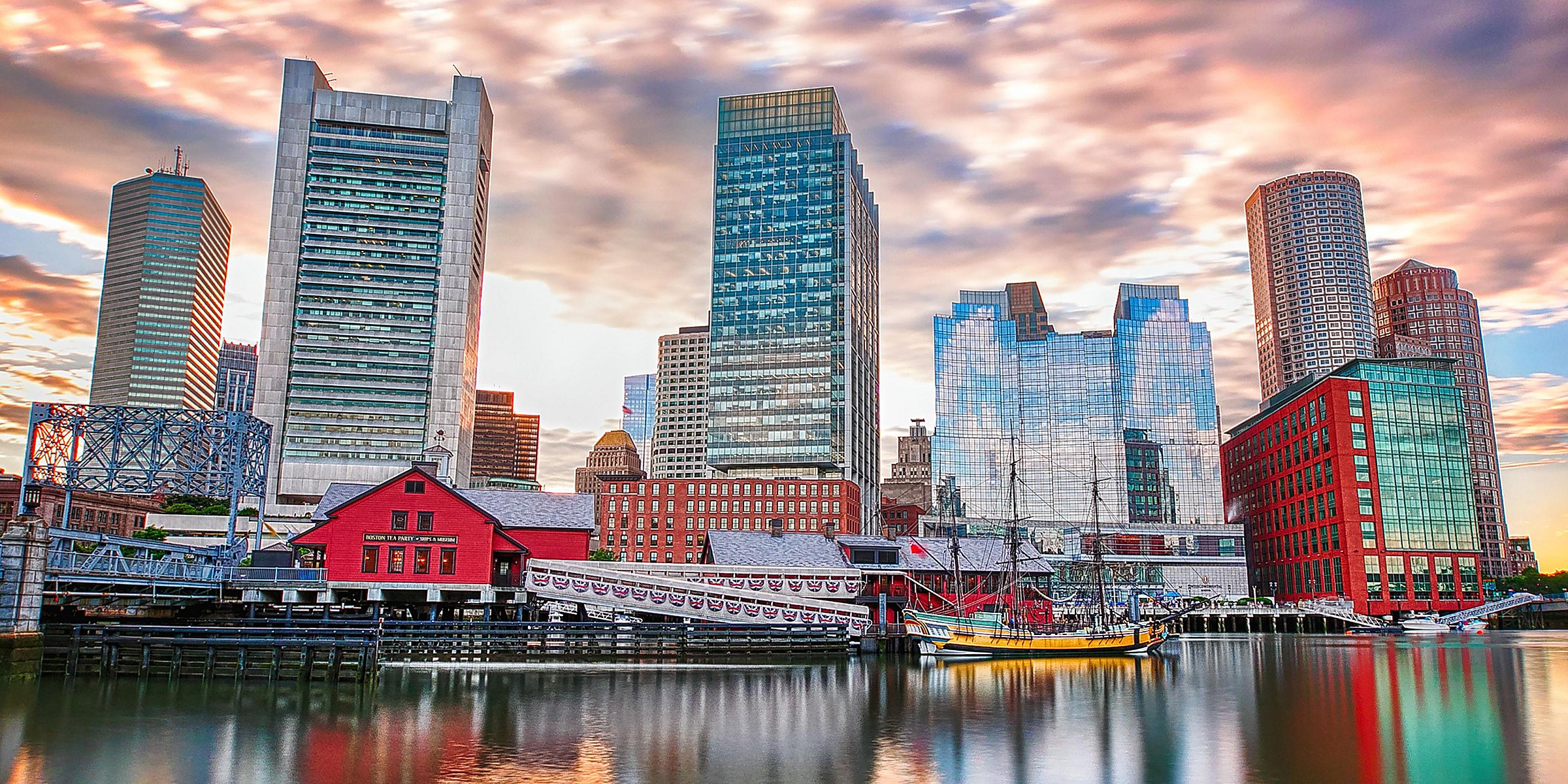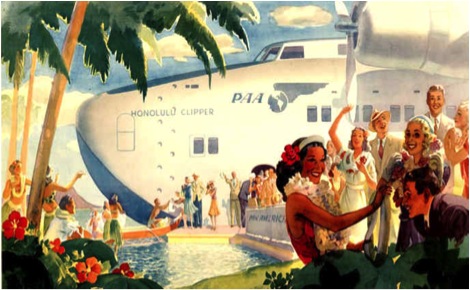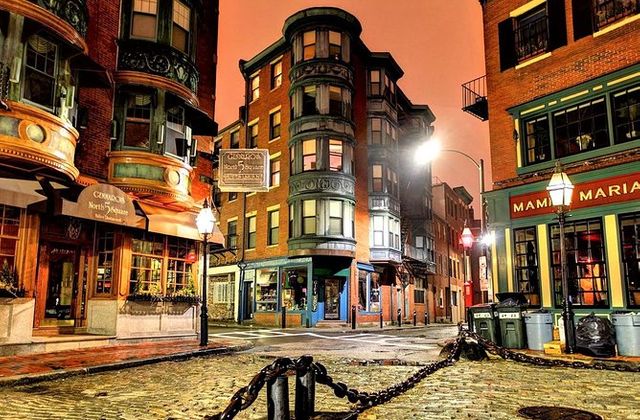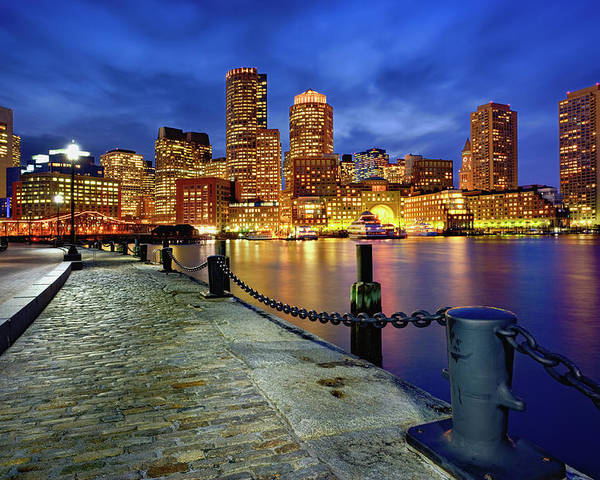
The InterContinental Effect
The InterContinental Hotel has commandeered Boston’s revolutionary harbor in a way the Redcoats never could. With next level concierge on a cosmopolitan seaport.

IHG Boston
The Boston Harbor, an estuary on the Massachusetts Bay, may be renowned for rebellion, revolution, and birth of the American Way. But a timeline of those coming to and from its shores reveals something history may have missed or hadn’t seen before.
The London based InterContinental Hotel may be a British multinational hospitality company headquartered in England, but after reclaiming the Boston Waterfront as its latest landmark hints at a tension between the American and Continental point of view.
From the InterContinental Boston’s Royal Ambassador Suite, floor-to-ceiling windows frame the historic Boston Harbor below. With a standalone salon and eight-person dining table, this 12th-story penthouse presides over the Four Points Channel — the precise and defining birthplace of the American Revolution — and captures an eerie reproduction of a frigate. A contrivance for the tourists, a closer look from this particular vantage point reveals something harder to see from the shore. This North Church of sorts lets us see what we couldn’t before.
American Exceptionalism
From the Boston Tea Party to the Treaty of Paris, the American Revolutionary War effectively absconded Thirteen Colonies from Great Britain, leaving American Colonists to reconsider a new national identity. Their Declaration of Independence proclaimed, “all men are created equal, endowed by their creator with certain unalienable rights, among them life, liberty and the pursuit of happiness.”
While liberty, equality before the law, individual responsibility, republicanism, representative democracy, and laissez-faire economics were perceived as their unique mission around the world, the U.S. did not entirely break with the social contracts of their forbearers by denouncing class and race-based discrimination, imperialism or a penchant for war.

Pan Am Advertisment
Come Fly With Me
So when Juan Trippe, founder of Pan American World Airways, commissioned the Boeing 314 Clipper following WWII, he began converting the U.S. military’s XB-15 Bombers into commercial aircraft. "There can be no atom bomb potentially more powerful than the air tourist,” Trippe said, “charged with curiosity, enthusiasm, and good will, who can roam the four corners of the world, meeting in friendship and understanding the people of other nations and race." It comes therefore as no surprise that when he conceived the InterContinental Hotel the following year, he did so with Pan Am’s international destinations in mind.
In 1945, U.S. President Franklin D. Roosevelt invited Juan Trippe to the White House where they discussed the concern for Latin America’s need for development. Columbus may have initiated the Columbian Exchange — the first widespread transfer of plants, animals, precious metals, commodities, technology and culture between the hemispheres — but it was Juan Trippe and President Roosevelt who took it to the next level when they agreed that integrating people to South America would require accommodations. Trippe, envisioning a rise in mass international air travel, agreed that Pan Am would form a subsidiary to foster the implementation of the idea and in 1946 the Intercontinental Hotel Corporation was founded. The Grand Hotel Belém in Brazil was the first to spread across Latin America and the Caribbean. This time in the spirit of collaboration.
Positioning a luxury hotel in each of Pan Am’s global destinations meant that Trippe was taking on an ambassadorial role around the world. In fact, Frank Sinatra’s 1958 classic “Come Fly With Me” was commissioned by Trippe to introduce destinations like Bombay, Peru, and the Acapulco Bay to the increasingly new world class traveler. Pan Am was the defining leader of the Age of Commercial Air Travel, and Trippe’s InterContinental hotels and the cities they served are how and why we flew.
True Hospitality For Good
The InterContinental Hotel Group’s purpose of “True Hospitality for Good” claims to inspire and inform everything they do – shaping a culture that commits to making a difference for their colleagues, guests and the communities they serve. With over 350,000 associates in more than 100 countries, the InterContinental Hotel Group now reaches further than Columbus may have ever dreamed.
Distinguishing its brand from the competition by creating unique experiences for every customer, IHG empowers their staff to improvise with their international guests, ensuring that every property is representing the cities they serve. From Bangkok to Hong Kong, London and beyond, the IHG properties not only reflect the cities they serve, but somehow calibrate that service to protect and preserve.
Trippe’s hotel was sold in 1981 at the time of his death to GrandMet > who sold to Saison > who in turn sold to Bass > who renamed itself Six Continents > only to rename itself yet again in a full circle of symmetry > The InterContinental Hotels Group.
But InterContinental’s home in Denham, Buckinghamshire England has remained the same for 75 years. Since 2017, its’ led by American CEO Keith Barr who comes cap in hand with a degree from Cornell University. An alma mater and start date he shares with the InterContinental Boston’s Front Desk clerk, Jeremy March.

Boston's North End
Truth Marching On
The occasion of our visit in August 2021 was a solemn one. Our father in law, a highly decorated Korean War Veteran and Boston Police Officer, had lost his battle with COVID-19. The Four Corners of Middleboro were being renamed in his honor, and a police escort thereafter would usher our convoy to the Massachusetts National Cemetery in Bourne.
From the Royal Ambassador Suite, we could see the North End — an iconic Boston enclave settled by Italian immigrants — and set forth on our last night to explore. The new Seaport Square project has transformed warehouses and parking lots into a 21st century experience, and a Greenway now connects Chinatown to the Financial District with promenades, gardens, fountains and art. Specialty lighting systems illuminate the Waterfront and lead us to the historic North End where we became lost.
“Good Evening,” a voice finds us in the crowd. Warm skin tones and perfect syntax reaches our family heads and shoulders above the fray, and given the congestion associated with St. Anthony’s Feast that last weekend in August one could be forgiven for mistaking him for an Italian prince. “How are you, sir?”
“Lost,” we replied, having failed to find a particular pastry shop.
“Mikes, Modern, Maria’s,” he asks?
“Something more remote. It's preferred by the locals.”
How this Front Desk clerk had recognized us from our brief, albeit masked check-in to the hotel three days earlier eluded us, but abandoning his own mission that evening to help us find a remote bakery came as a surprise.
Bova’s Bakery had been a North End tradition since 1926, and was a popular stop for Boston’s Finest, too. We queued in line with the men in blue that evening and could somehow calibrate our younger father in their countenance. Somehow more than the commemorative ceremonies in the days before, we began to see what Trippe saw. “How can we fail to smash and shatter petty provincialism and narrow nationalism,' Trippe asked. "How can our fabulous new force fail to serve the hope and peace of the world?”
That the InterContinental Hotel presides over a spectacular new Waterfront may be a testament to the future. But we never would have found the past without her.







